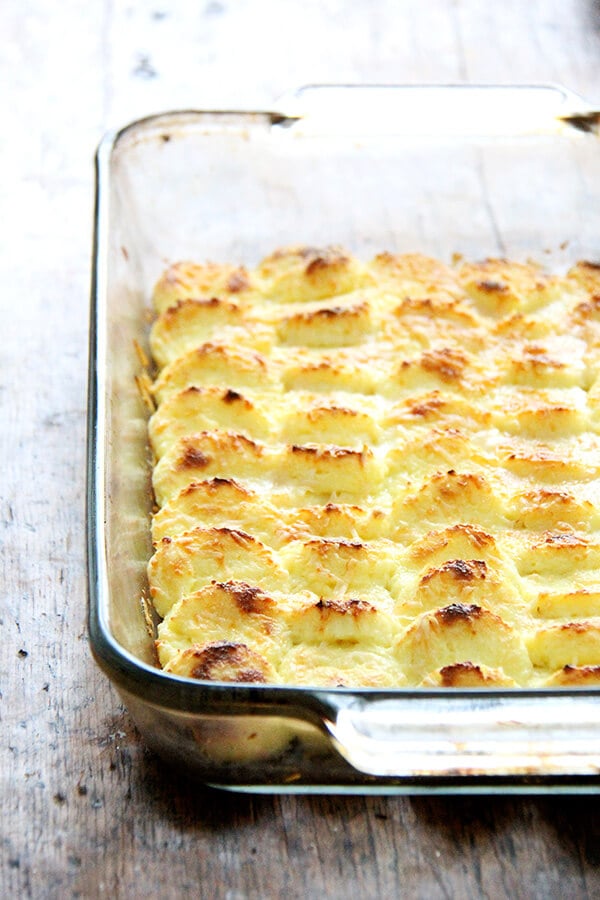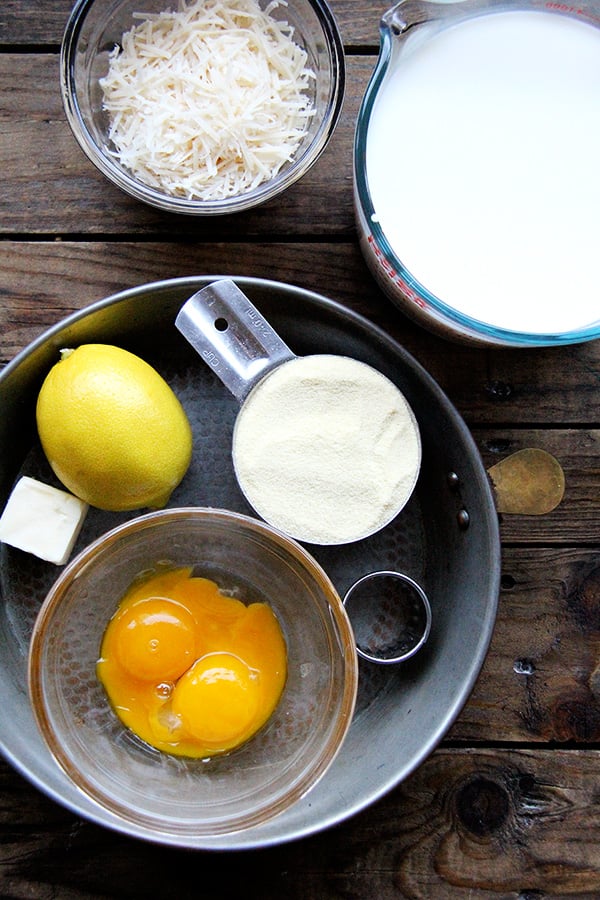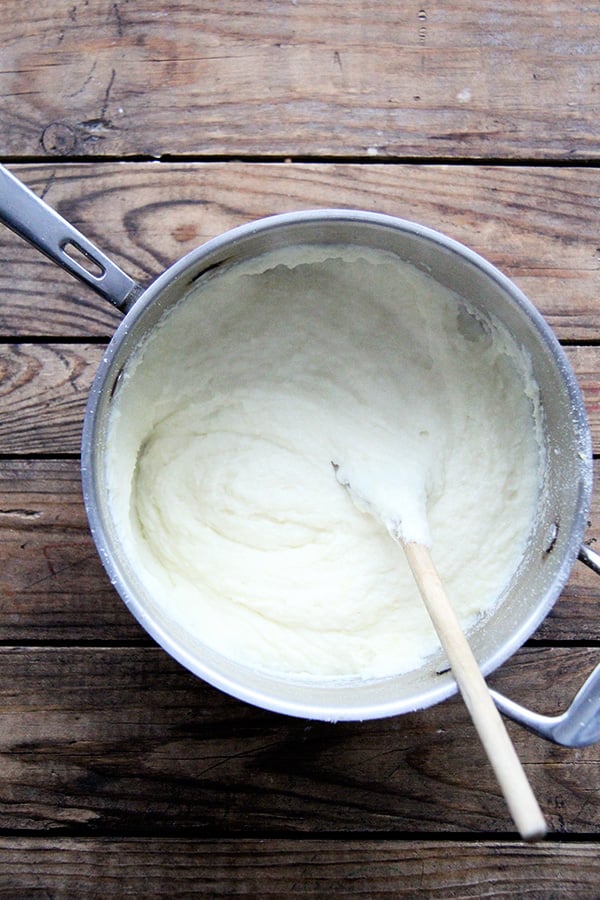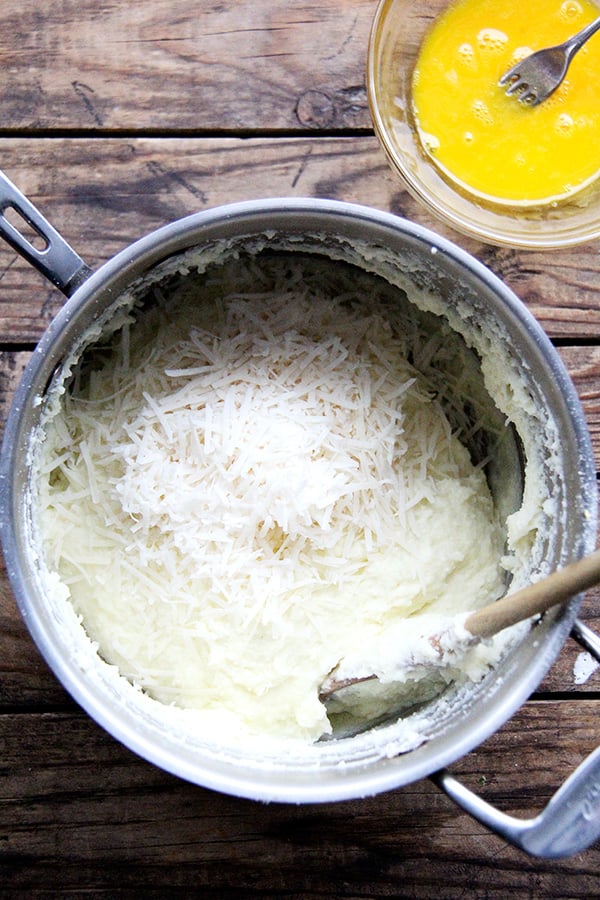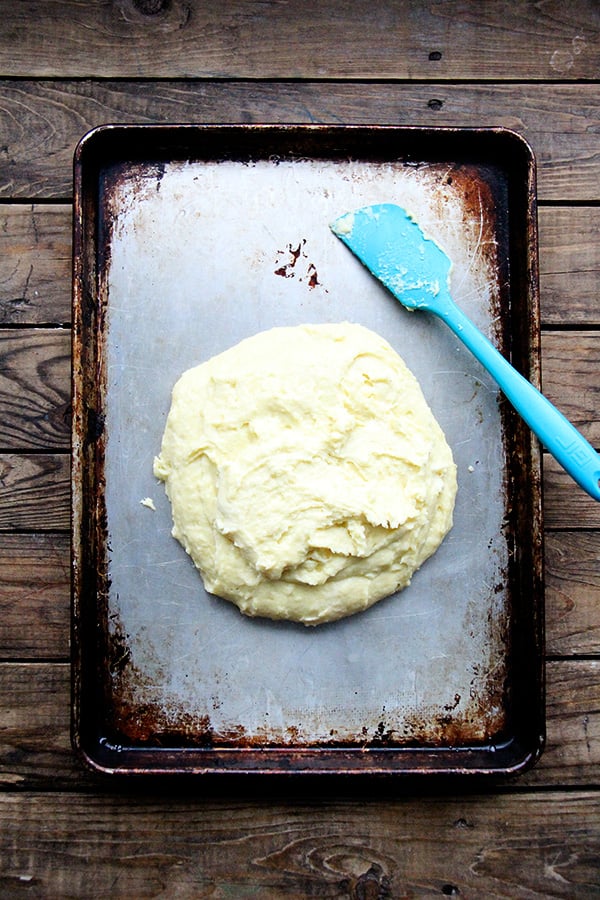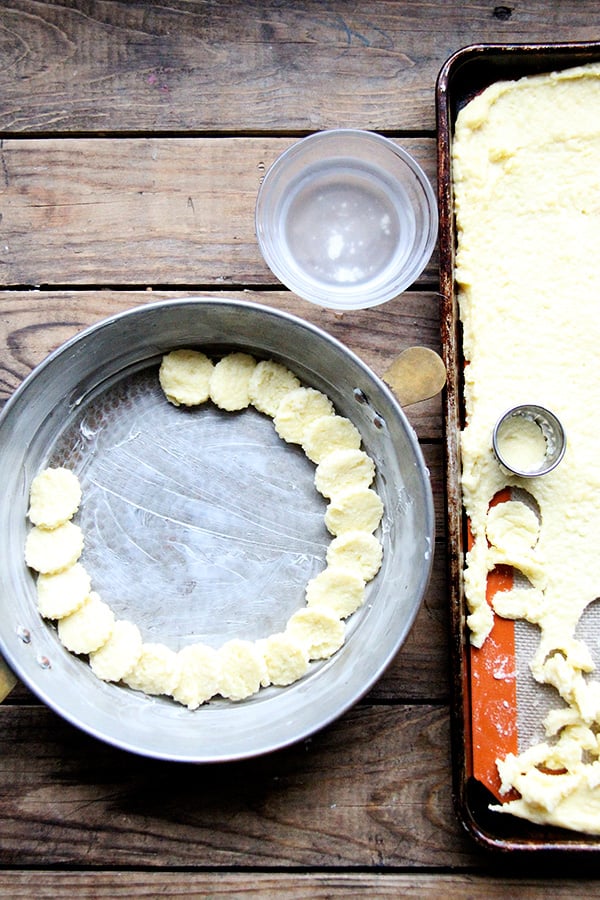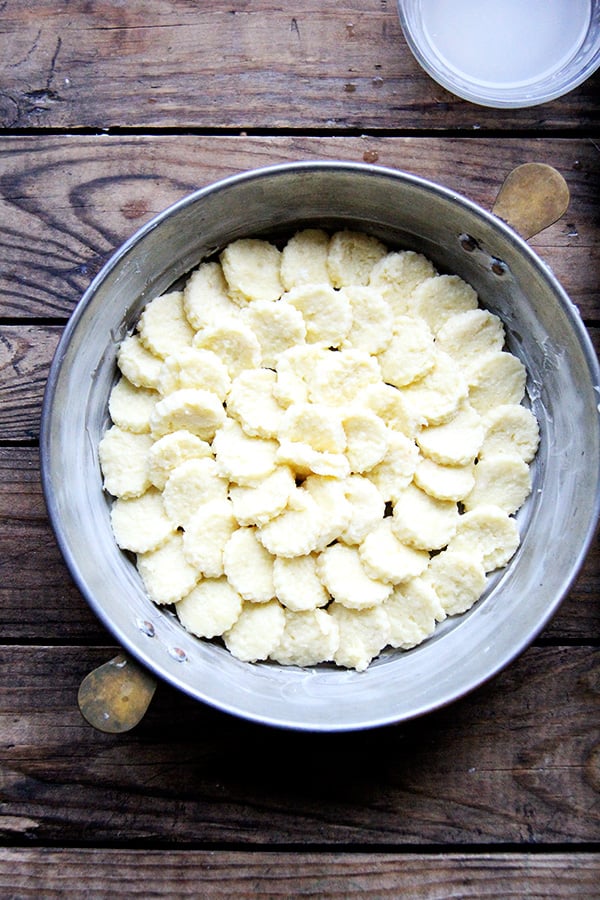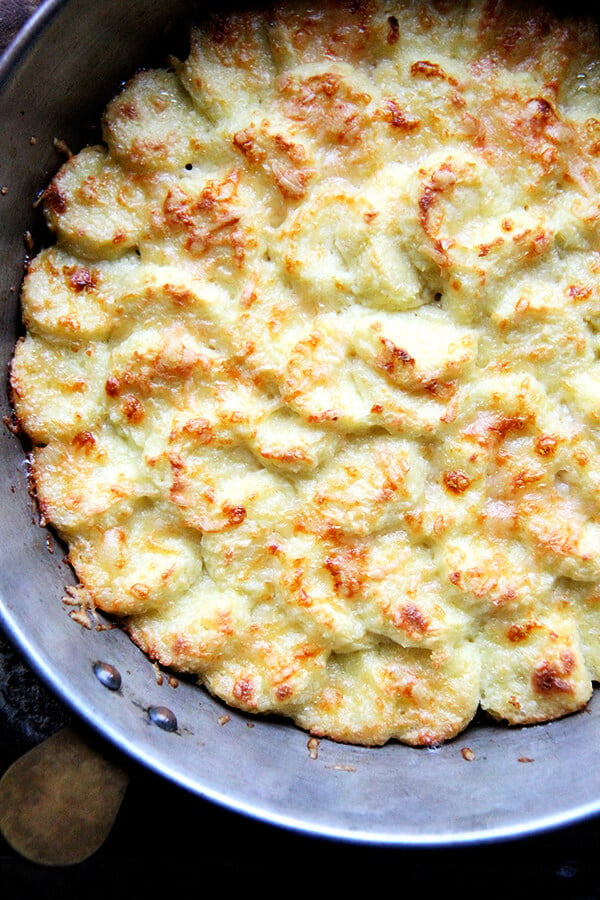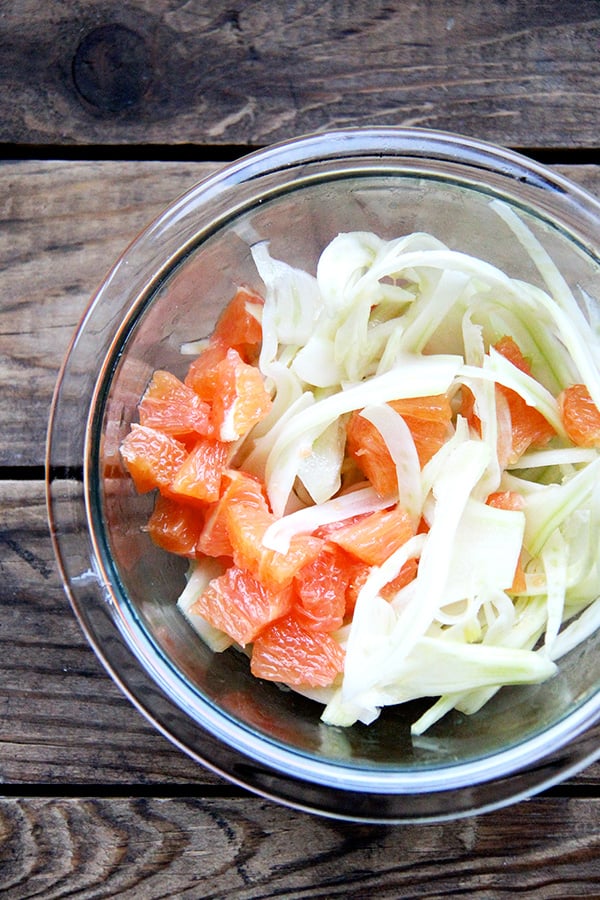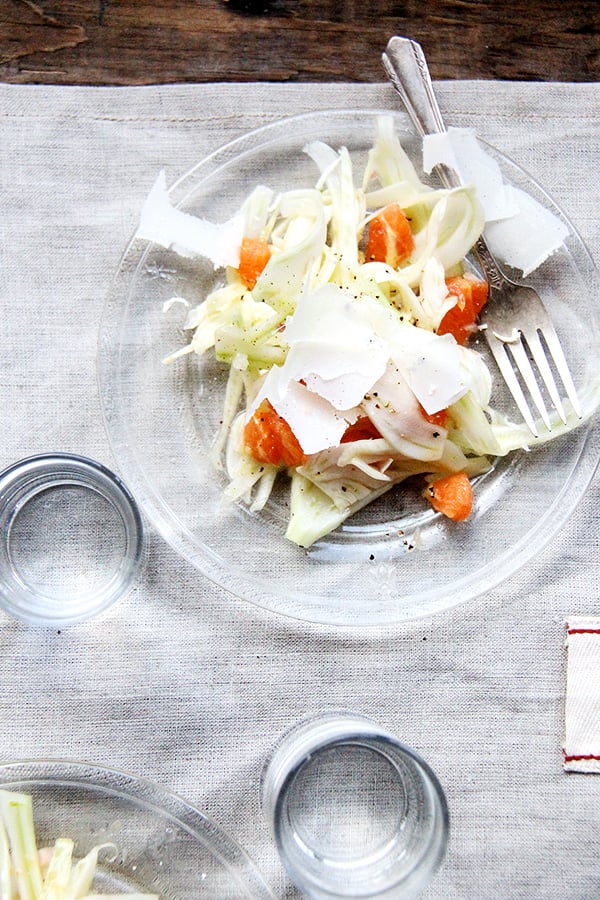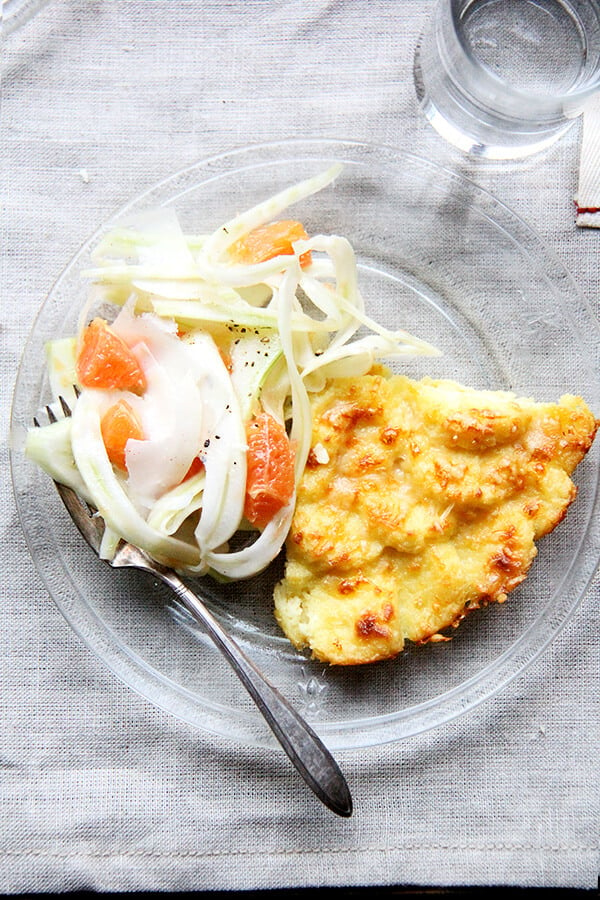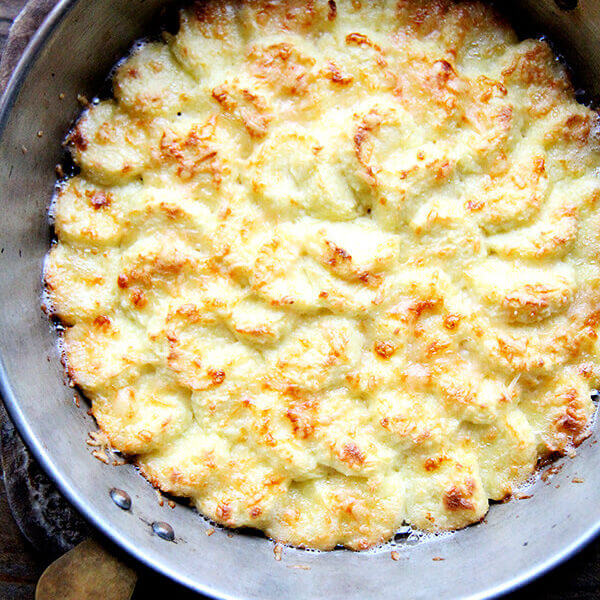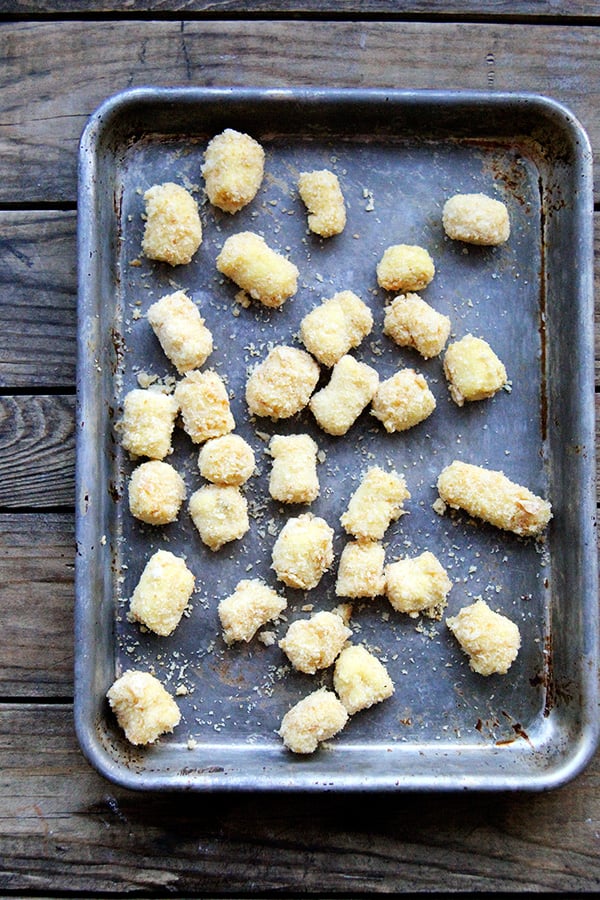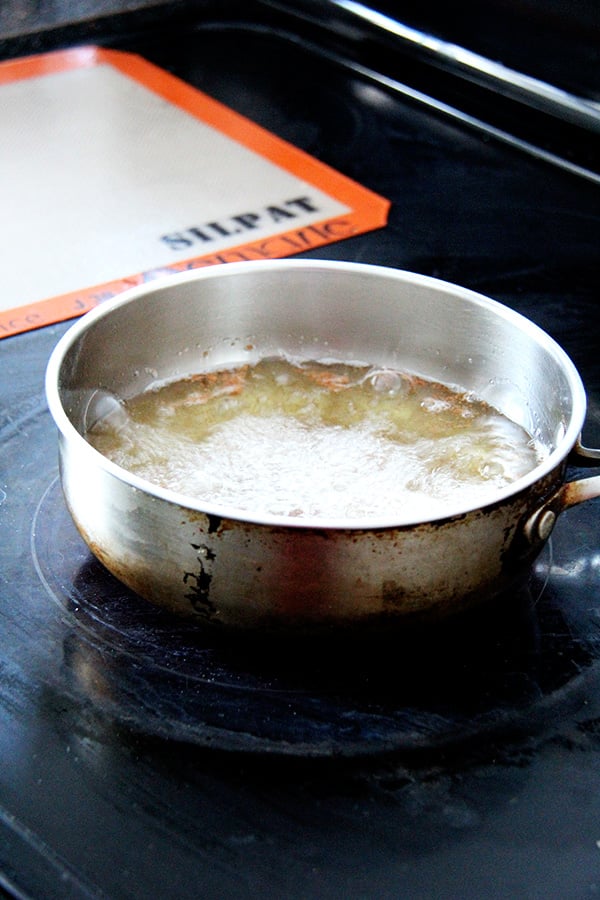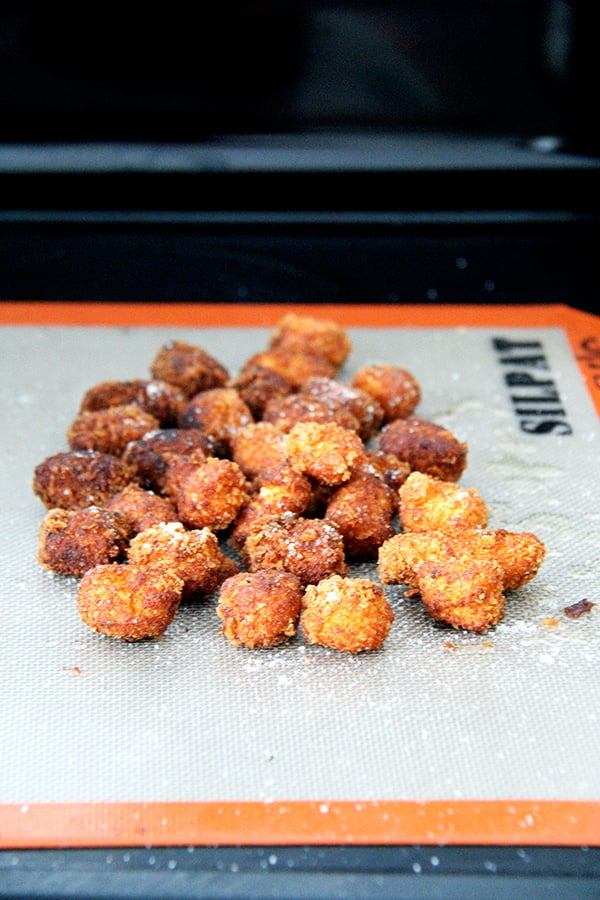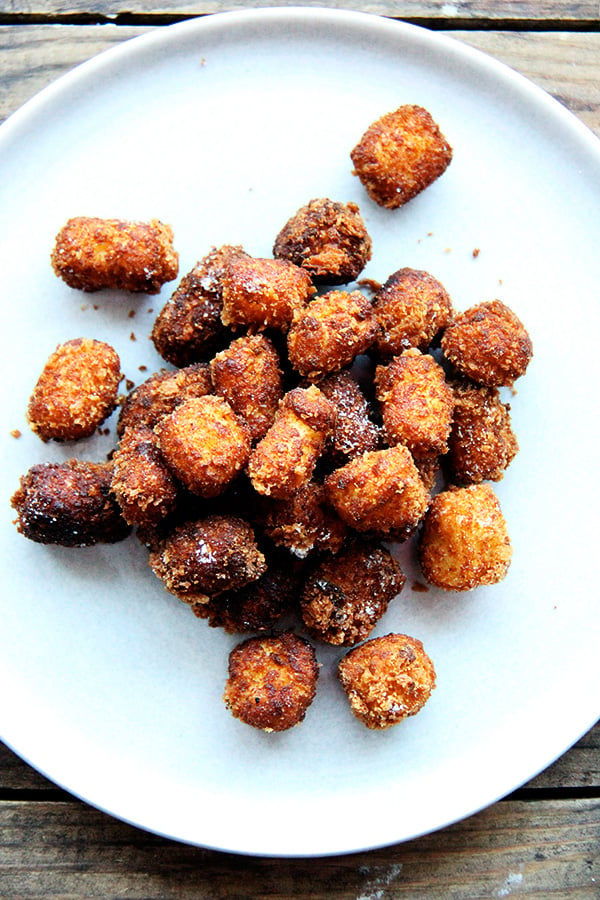I arrived to find salad plates topped with shaved fennel, blood oranges and olives, a casserole dish lined with pale-yellow coins overlapping like roof tiles, and a skillet slicked with oil and a minced shallot. As we chatted, lunch quickly materialized: the golden coins baked away while greens wilted stovetop, and my friend dressed the fennel and oranges with fresh lemon and olive oil. Shortly after sitting down to eat, I took my first bite of gnocchi alla Romana or baked semolina gnocchi, a recipe from Marcella Hazan’s Essentials of Classic Italian Cooking. Made with milk, semolina flour, parmesan and egg yolks, gnocchi alla Romana bear little resemblance to potato gnocchi. They taste more like polenta in fact, but are lighter in texture, and my friend’s tasted lemony, thanks to the addition of lemon slices to the heating milk, a touch my friend learned from her Italian mother-in-law. In addition to being incredibly delicious, the beauty of gnocchi alla Romana is that it can be completely assembled ahead of time — up to two days — and baked just before serving. With every bite, I felt inspired to get into the kitchen. A ricotta gnudi debacle several years ago has kept me from attempting recipes in this genre since, but this one, with its make-ahead capabilities, seemed within reach. And it turns out it was. I have since made the gnocchi, which my whole family devours, several times and have also made fritters with the gnocchi scraps, because Marcella insists that you do. And for good reason: the fritters are as equally scrumptious as the gnocchi and amount to a second meal (or snack) in themselves. To all of you Love Birds, have a wonderful Valentine’s Day. I vote for gnocchi alla romana — molto romantico! — with a fennel and orange salad on the side and a brownie for dessert. PS: More Desserts here.
Making the fritters: No reviews Ahead-of-time note: Gnocchi can be completely prepared and assembled in baking dish two days in advance. Cover tightly with plastic wrap before refrigerating. Keep the trimmings, too, in the refrigerator in a tightly sealed container. Lemon: If you have a microplane grater, you can grate the zest of one lemon right into the milk, or you can do what my friend does: add three lemon slices (about an 1.5-inches long) into the pot with the milk and then fish them out before spreading the batter onto the cookie sheet. To make fritters with the trimmings: Knead the trimmings together briefly into a ball up to a day or two before you plan to use them. When you are ready to make the fritters, divide the dough into croquette size pieces, adding a pinch of salt, shaping them into short, plump forms tapered at each end, about 2.5 inches in length — I just rolled them into a long snake and used my bench scraper to cup them into 1.5-inch pieces. Roll them in dry unflavored breadcrumbs and fry them in hot oil until they form a light crust all over. Sprinkle with salt To make the salad: My friend simply arranged thinly sliced fennel, orange segments and olives on plates, seasoned with salt and pepper, and spooned over fresh lemon juice and olive oil. It was delicious. When I made this salad, I had a shallot vinaigrette on hand, so I just tossed the fennel and orange together with that vinaigrette, mounded it on plates, and shaved Parmigiano Reggiano over top. For two people you need about 1 bulb fennel thinly sliced (a mandoline is helpful here) and the segments from 1 to 2 oranges (blood or cara cara are nice). Here’s how I make my shallot vinaigrette: Finely dice a shallot or two. Place in a bowl and cover with white balsamic vinegar, 3 to 4 tablespoons. Season with a pinch of kosher salt and a pinch of sugar. Let macerate for about 15 minutes. Whisk in ⅓ cup extra-virgin olive oil to start. It’s ok if the dressing is not totally emulsified. Taste and adjust with more oil, vinegar (or a squeeze of orange if you have one), salt, sugar, etc.
